How Much is Shopify? Start your first store hassle free (2023)

Shopify has recently become the go-to website builder for online stores because it is easy to use and gives you design flexibility & access to sales channels. Generally, it is a complete eCommerce store solution.
But all these features don’t come for free. So how much is Shopify? The answer depends because the builder has different pricing plans and a few extra optional costs.
We will go through the cost of setting up a Shopify store to help you pick the right subscription plan. Let’s get right into it!
What is Shopify?
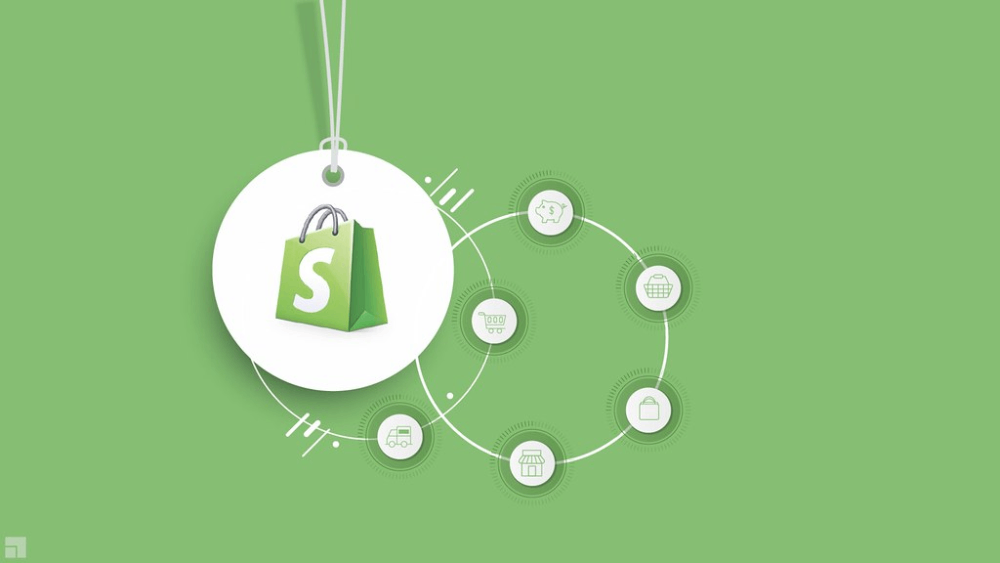
Shopify is an application software for building, growing, and managing eCommerce platforms.
The application runs on the web browser and operates as a SaaS (cloud-based). With SaaS, you pay a monthly fee to use the software, not a one-time payment to own a copy.
Therefore, you don’t need to install the software or pay for a hosting plan because the product is a hosted solution.
Also, you don’t need to worry about maintaining or upgrading the software/web servers. This model gives you more time and flexibility to access and run your business from anywhere.
However, the features and functionalities you get from Shopify depend on your subscription pricing plan. Speaking of price, here’s a summary of the available subscription plans.
Shopify Pricing: A Quick Breakdown
Shopify has three primary pricing plans. They include
Each plan has the following credit and debit card rates for every transaction.
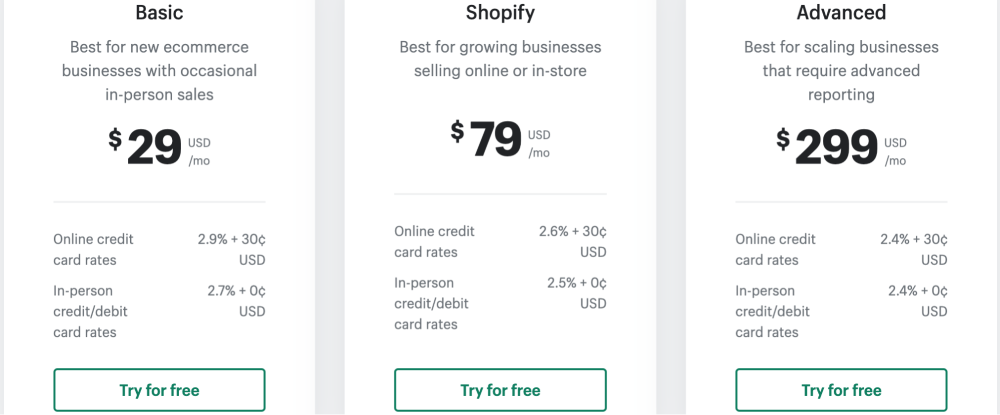
Besides these three, there are two secondary pricing plans. These give more flexibility to suit more personalized needs, and they include:
The card and transaction fees on sales are the annoying charges that eat into your profit, but you can avoid them. We’ll talk about that later on in the article.
Each of the five plans also comes with a 14-day free trial period that you can sign up for without providing your credit card details. With that in mind, let’s look at a detailed comparison between the subscription plans.
Shopify Plans Comparison Table
Features | Basic | Shopify | Advanced |
|---|---|---|---|
Store Components | Ecommerce website and blog | Ecommerce website and blog | Ecommerce website and blog |
Products | Unlimited | Unlimited | Unlimited |
Staff Accounts | 2 | 5 | 15 |
Support | 24/7 (Email, Open Chat, Telephone) | 24/7 (Email, Open Chat, Telephone) | 24/7 (Email, Open Chat, Telephone) |
Sales Channels | Social media and online marketplaces, but availability varies by country | Social media and online marketplaces, but availability varies by country | Social media and online marketplaces, but availability varies by country |
Inventory Locations | 4 max | 4 max | 8 max |
Manual Order Creations | Available | Available | Available |
Discount Codes | Available | Available | Available |
Free SSL Certificate | Available | Available | Available |
Abandoned Cart Recovery | Available | Available | Available |
Gift Cards | Available | Available | Available |
Reports | Basic | Standard | Advanced |
Calculated Third-Party Shipping Rates | Not available | Not available | Available |
Customer Segmentation | Available | Available | Available |
Marketing Automation | Available | Available | Available |
Ecommerce Automations | Not available | Not available | Available |
Unlimited Contacts | Available | Available | Available |
The plans also have the following differences when shipping.

For international commerce, the plans only have two differences.
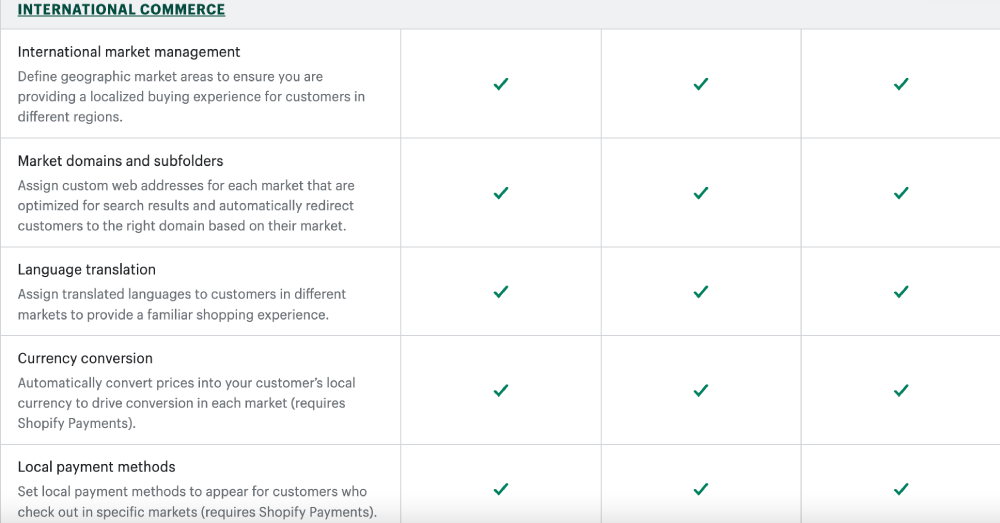

As for the payments, each plan comes with fraud analysis, but the transaction fees vary, as shown below.

Differences in Shopify’s Pricing Tiers
Now, let’s look at each pricing tier individually.
Basic Shopify
This plan is great for new business owners who don’t sell a lot at first. It would also work well for stores that sell a wide range of products and sometimes sell ”in-person” to cut down on credit card fees.
The plan offers a Shopify-hosted storefront, 24/7 support, unlimited products, and language translation to boost business growth during its infancy.
However, there is a downside. The credit card (2.9% + $30¢) and third-party transaction fees (2%) are significantly higher than the other plans. You might have to increase your product prices to break even, which will impact sales.
Shopify
This plan can help growing businesses by giving them more professional reports. These will give more accurate information about how the business is doing.
Even though the plan is more expensive, it makes sense because you will get lower card and transaction fees (2.6% + 30¢ and 1%, respectively).
Shipping is also a key factor for online stores, and this plan gives up to 88% discounts from USPS, DHL Express, and UPS. Such deals will lower costs on the customer end, increasing the chances of getting more sales.
The plan is ideal for businesses netting about $5,000 monthly.
Advanced Shopify
Online stores earning about $10,000/month need advanced tools to run the business, which is what the Advanced Shopify plan provides. These include
Additionally, the plan has lower transaction and card fees, which will enable you to lower your product prices and boost sales.
What About Shopify Lite and Shopify Plus?
What if none of the three plans above fit your business? Shopify provides two custom pricing plans for light and complete integration.
Shopify Lite
This plan is the cheapest of the five because it costs only $9 monthly. But it has limited features. The most notable difference is that this does not include a complete storefront.
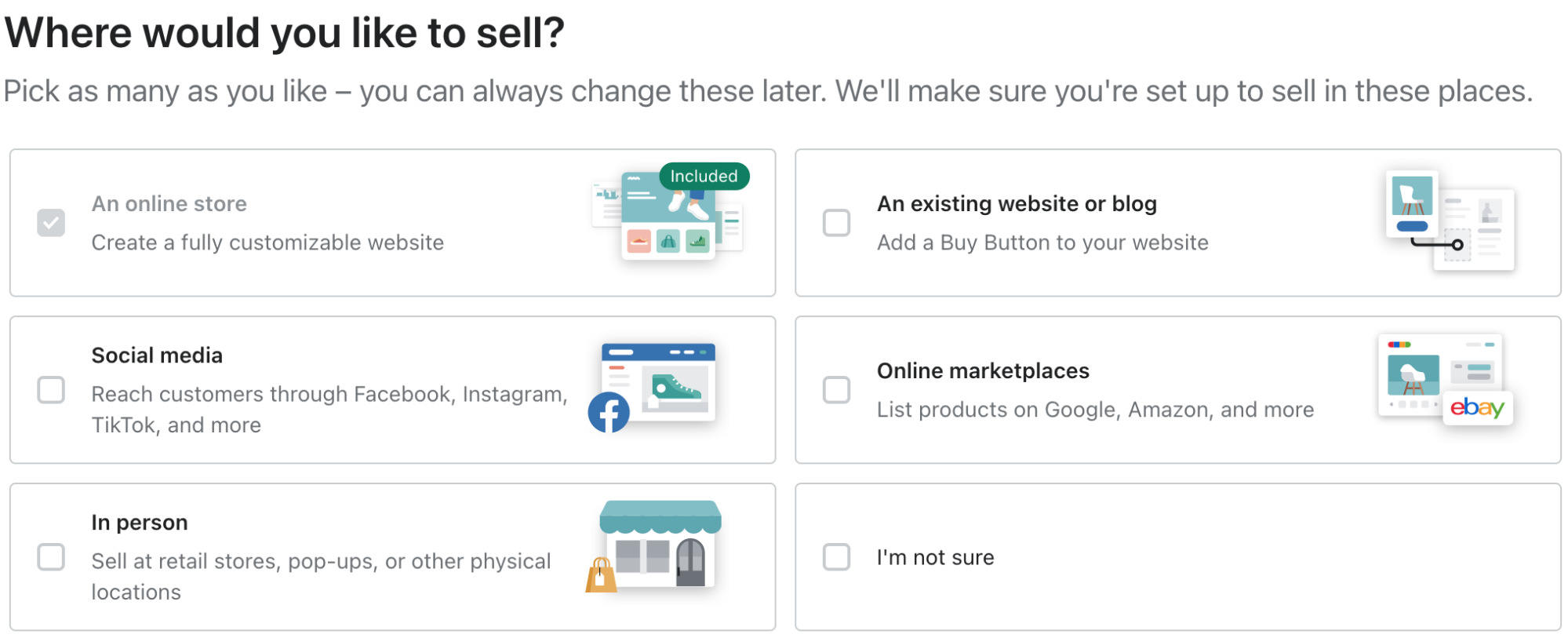
Instead, it adds features to an existing website. Therefore, if you already have a website or social media page for your business, Shopify Lite is the ideal plan. It gives you an admin panel/ overview dashboard plus the following.
Shopify Plus
Shopify Plus is on the other end of the scale compared to Shopify Lite regarding pricing. It starts at $2,000 per month, making it the most expensive and advanced Shopify plan.
Such a fee is only ideal for big brands that make significant monthly profits, and you need to contact Shopify to activate this plan. So, what does $2,000 monthly get you?
What if I Want to Add a Point-Of-Sale (POS) System?
All Shopify plans include a POS lite feature for integrating the Shopify backend with iOS and Android apps for in-person selling. POS lite attracts zero transaction fees, but you will incur card fees per the pricing plan.
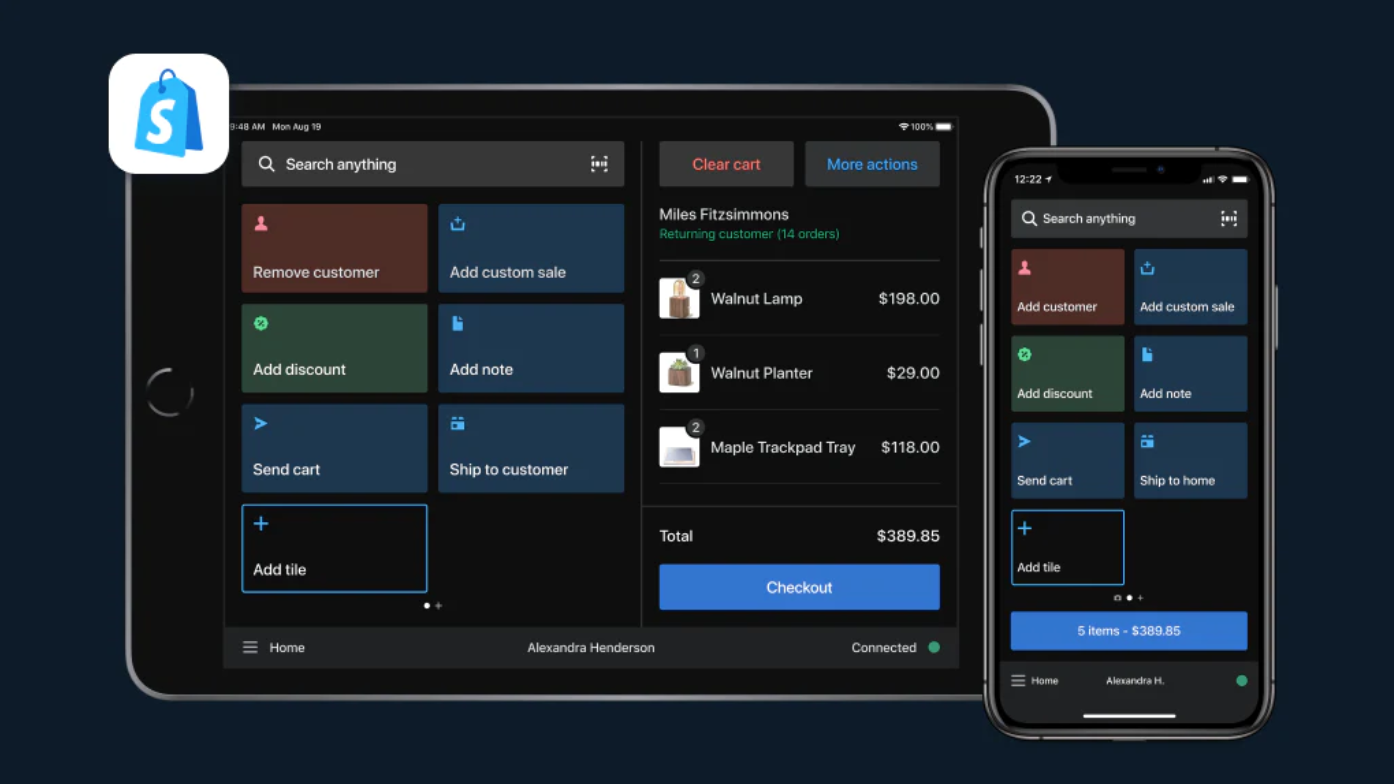
There is a POS pro version with advanced inventory tools, staff permissions, in-store pickups, and faster workflows.
If you want this POS system, you must pay $89 monthly regardless of the Shopify plan. You can also choose which locations to upgrade to the pro version to get the above benefits.

Shopify Pricing: How to Reduce Your Costs
The costs associated with running a Shopify store include the subscription fees and transaction/credit card fees. If you can find a way to lower these, your accounts will have a higher balance. Here’s how to achieve that.
Use Shopify Payments to Avoid the Shopify Transaction Fee
You will note that the transaction fee for third-party payment providers is separate from the credit card fees in the shopping payments comparison above.
Remember that using the third-party option attracts the transaction fee plus whatever the payment provider charges.
This fee might seem small, but even the 0.5% for the advanced plan is a considerable sum if your sales volumes are high. You can avoid this transaction fee by using Shopify payments.
Although only available in specific countries, Shopify’s payment system accepts the most popular online payment methods and all major credit cards. You will avoid these extra costs if you can direct your customers to pay directly via Shopify.
PDF resource on Shopify payment requirements
Purchase your Domain Name Elsewhere
Shopify online stores use a “myshopify.com” domain by default. It’s like the “wordpress.com” domain for free WordPress-hosted websites. This domain does not look and sound professional, so you might want to purchase a custom domain name for your store.
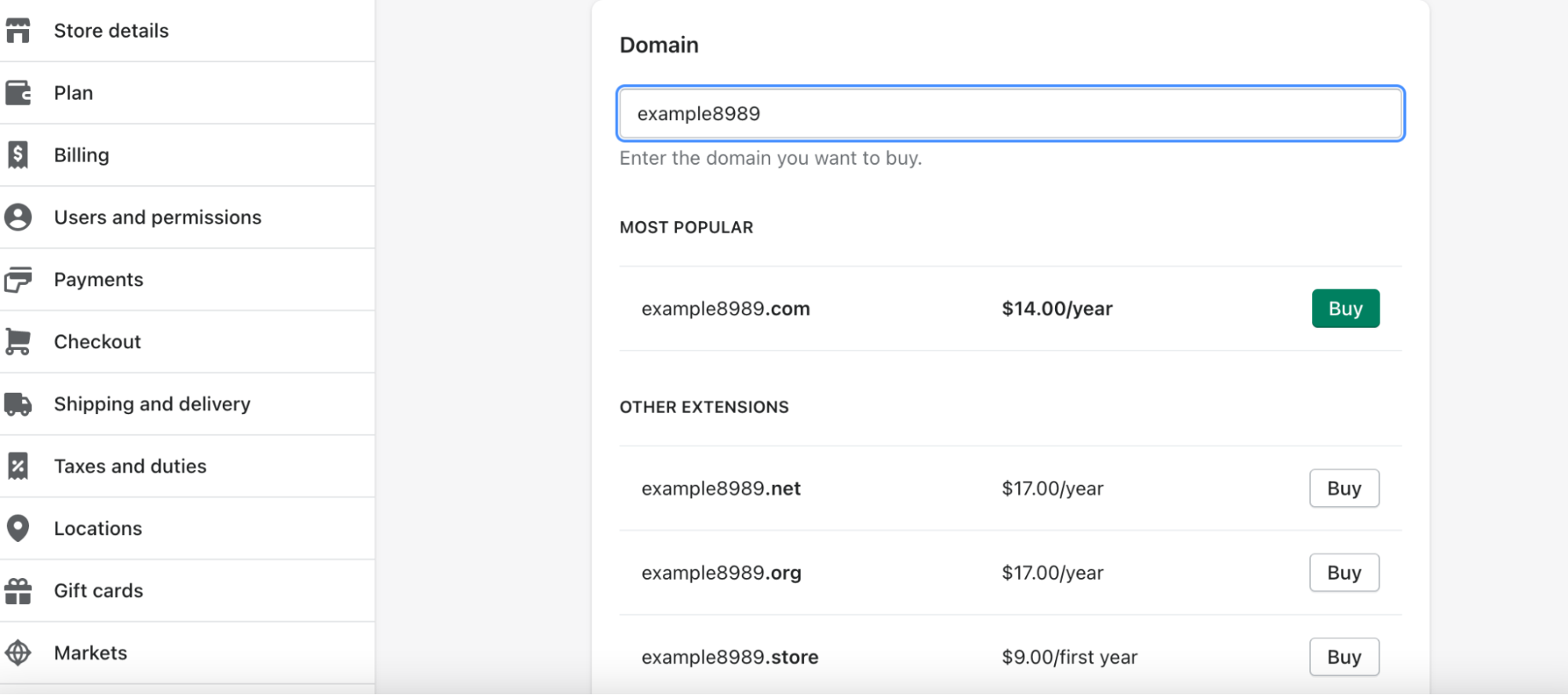
The platform offers a free domain generator tool, but purchasing a domain name costs at least $14 per annum. You can save a few bucks by buying a domain from external registrars like GoDaddy, NameCheap, Domain.com, Google Domains, etc.
Also, the Shopify domain registration service does not include email hosting, so you will probably get a better deal by getting a domain elsewhere.
Besides the domain name, compare the custom template vs. adding apps from the app store. It is best to test as many features as possible during the 14-day trial to determine which features to purchase.
Upgrade to a Yearly, Biennial, or 3-Year Plan (Save up to 25%)
While the monthly plans seem reasonable, you can get a better deal if you pay for an annual, biennial, or 3-year subscription. A yearly subscription will get you a 10% discount, while the two-year plan can save you 20%. The 3-year plan gives the best deal of 25% off.
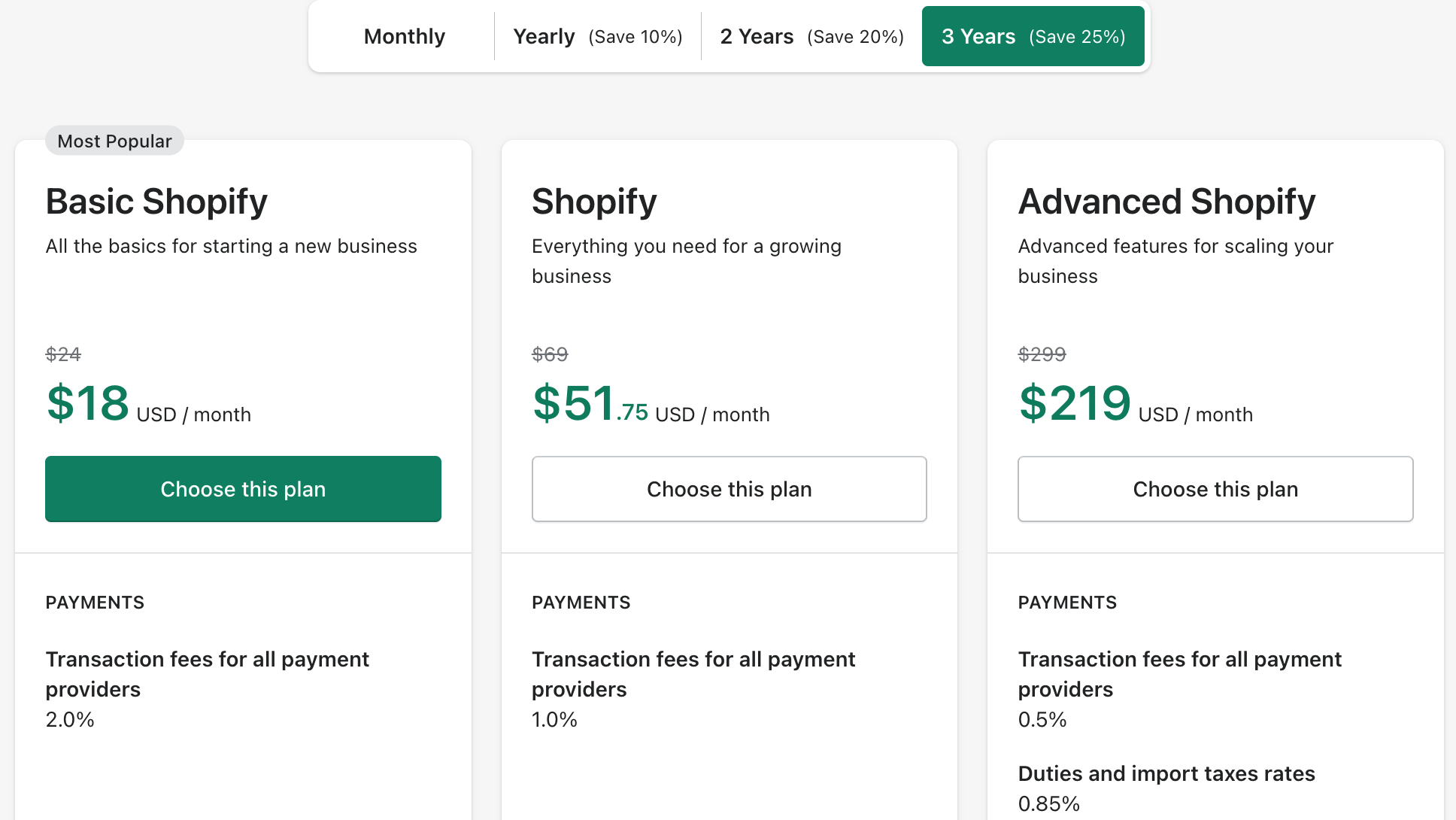
Another benefit of switching to annual or biennial plans is that you qualify for the free third-party calculated shipping rates.
However, such long-term payments are expensive for beginners, so you might want to pay monthly, then switch to an annual subscription later.
Furthermore, trying Shopify for some time is vital to see if it works, so paying long-term is not a wise decision at first. Remember, there are no refunds if you cancel your subscription.
Shopify Credit Card Rates Explained
Credit card rates are the fees charged for handling payment processing. Shopify deducts this amount before the money hits your account to facilitate its operations.
Most merchants transfer this cost to customers by increasing product prices to match the deductions.
It is vital to note that these fees are per transaction, not per item sold. Therefore, the fixed amount in cents is standard whether a customer buys one or 50 items in a single transaction. However, the percentage will vary depending on the sale amount.
How Do Transaction Fees Work?
Transaction fees are the charges incurred for purchases made using third-party payment processors instead of Shopify payments. These are 2%, 1%, and 0.5% for the Basic, Shopify, and Advanced plans.
What are Transaction Fees For?
Customers visit your online store and look through the product pages before purchasing something. Since Shopify hosts the software, it takes resources on their end to power your store.
The transaction costs help offset these costs to keep your store running optimally, which is crucial if handling multiple shoppers.
Doesn’t the Monthly Plan Fee Cover this Already?
The monthly fee primarily covers access to Shopify as a platform and its tools, which get your store up and running. However, transaction fees keep the store powered by contributing to Shopify every time you make a sale.
Do Other Ecommerce Builders Charge Transaction Fees?
Yes, they do, but in different ways. For instance, BigCommerce automatically upgrades you to a higher pricing plan if you exceed a certain sales threshold.

Even though they don’t charge the transaction fee directly, this model will eventually force you to pay more monthly. Part of this money will cover the transaction fees.
Wix also has no transaction fees, but the service’s plans are more expensive than Shopify’s. Additionally, you must pay the payment gateway provider fees for each transaction.
Do Other Ecommerce Builders Charge Transaction Fees?
As explained earlier, you can eliminate these fees by using Shopify payments.
How Can Shopify Keep My Ecommerce Website Powered Without the Transaction Fees?
If your customers use Shopify payments, you will not incur transaction fees. However, you will incur the credit card fees, which go to Shopify’s account.
Therefore, Shopify handles the transaction instead of a third party, enabling them to waive the transaction fee. They still get their money, but you only have a few deductions (credit card fees).
Credit card fees are actually lower than the charges incurred by most payment processors like PayPal. Thus, Shopify payments will save you a lot more.
Additional Shopify Costs
Setting up your online store is one thing, and running it is another. Shopify does not provide all the tools, even in the most expensive package. Therefore, you might incur extra costs to acquire the following.
Apps
Like WordPress, Shopify has a for customizing your website design (layout, color, style, etc.).
Shopify operates like most operating systems. It acts as the backbone on which you can add more services and additional functionalities via apps.
The service includes access to an app store containing third-party apps designed to enhance your store’s performance. Some are free, and others are premium. If you find some of these essential to your store, you will have to pay extra charges monthly for the services.
Domain Name
As explained earlier, you can register a domain name via Shopify or any external registrar. Domain name registration begins at $14, but using an external registrar can be cheaper or costlier.
Email Hosting
Shopify does not have a service for email hosting, but you can get free, unlimited email forwarding to your registered domain from an external hosting service. However, hosting costs as little as $1 to less than $10 monthly, but you have paid for a domain name.
Themes and Design
Like WordPress, Shopify has a theme collection for customizing your website design (layout, color, style, etc.).
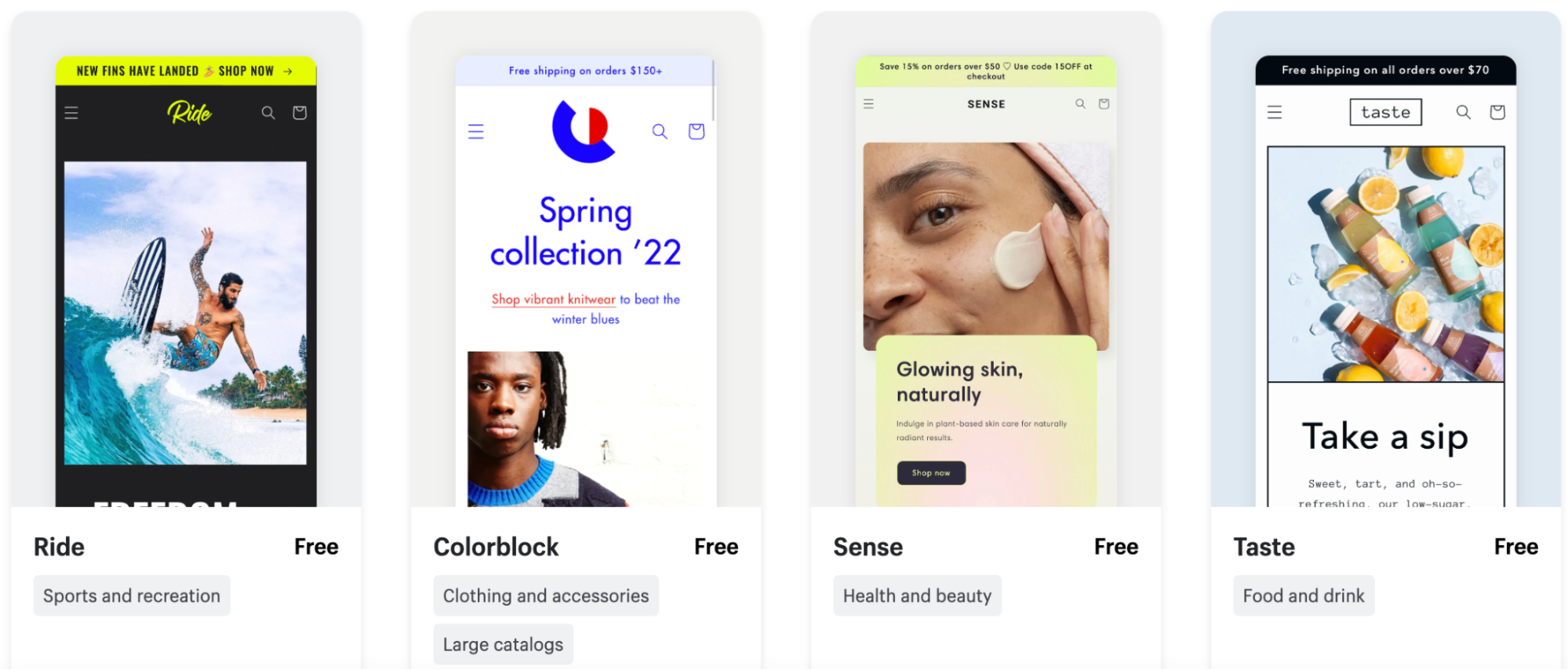
Some are free, while others are premium, costing anywhere between $150 and $350.
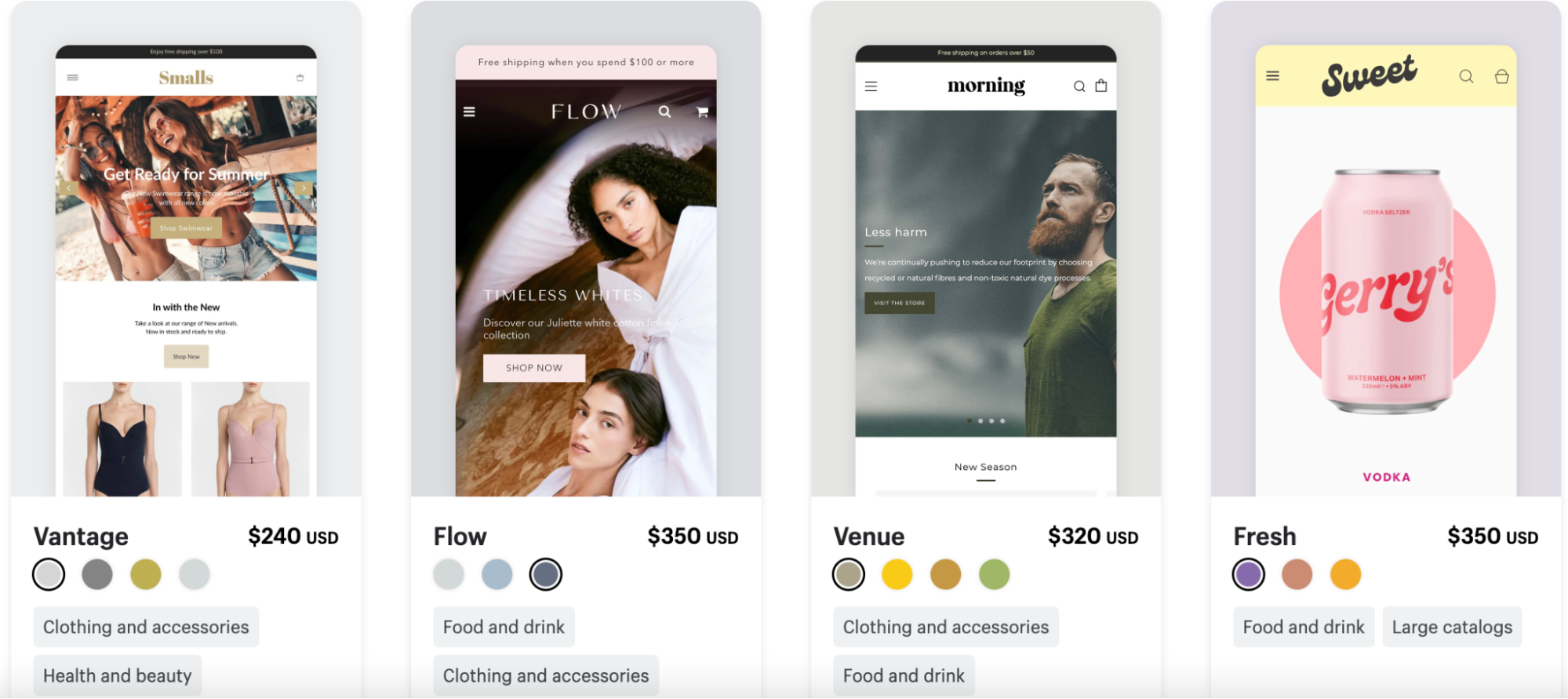
How to Improve Customer Experience After Setting Up Your Online Store
Most businesses understand that customer experience is vital for retaining customers and increasing sales. However, some leave the customers unattended after making a purchase, leading to a poor post-purchase customer experience.
A poor post-purchase customer experience is costly for any business because it will reduce the number of repeat customers.
Such customers usually bring in more money because they have tried the brand and gained some trust. According to a report by Manta and BIA/Kelsey, over half of the revenue earned by small businesses comes from repeat customers.
Repeat customers are also easier to sell to, buy more, and promote your business, so it is vital to ensure they get the best shopping experience.
One way to improve customer experience after purchasing is by automating the shipment tracking process. Rush is one of the best apps for this task because it keeps customers updated about their shipment’s location until it arrives.
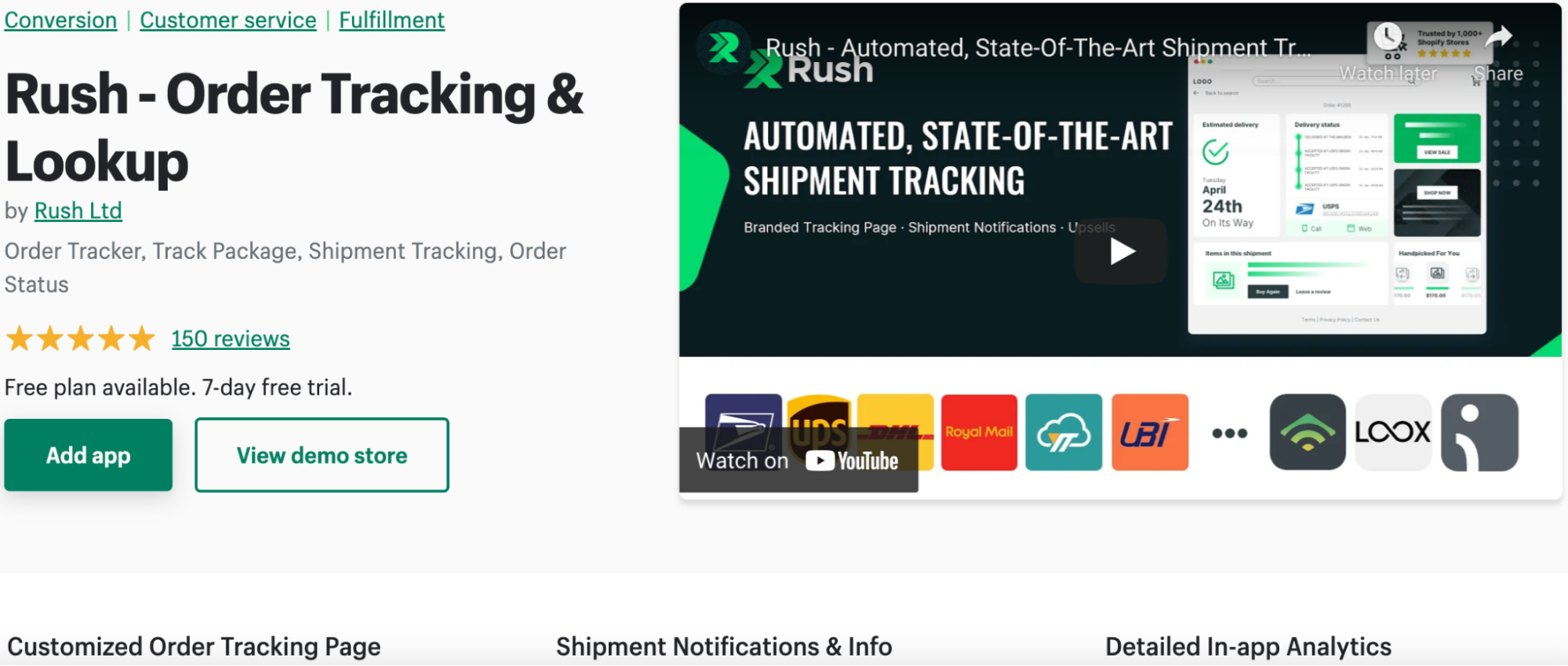
The app does much more than just real-time order tracking because it offers:
Therefore, Rush is an asset for your online store and will help boost your sales so that you can break even and make your business profitable asap.
FAQ
Can I try Shopify before committing?
You can try Shopify before committing. The service has a 14-day free trial period for all five plans, which you can sign up for without providing credit card details.
Can I Upgrade or Downgrade My Plan Easily?
Yes. You can upgrade or downgrade your subscription easily. Such a request will terminate the current billing cycle and initiate a new one. If your current plan has any funds, Shopify will credit them to your new subscription.
How Do I Cancel My Shopify Subscription?
You can cancel your Shopify subscription by going to the admin page, then “settings > plan.” Click on “pause or deactivate store.”
After that, you can click “deactivate store” to cancel your subscription. Next, enter the reason for deactivation, then click continue. Conclude by entering your password and clicking “deactivate now.”
Is There a Money-Back Guarantee? Can I Get a Refund?
Shopify has no money-back guarantee. Instead, the service has a 14-day free trial period that should give you enough time to determine if it is a worthy investment for your business.
How Much are Shopify Themes?
The prices vary from $0 to about $350. There are nine free themes, but the majority are premium.
Do I Need to Enter My Credit Card Details for the Free Trial?
No. All you need is to sign up using a valid email address, and you can begin exploring the hosted software.
Is Shopify Lite the Same as Shopify Basic?
No. Shopify Lite does not include a complete Shopify-hosted storefront, while Shopify Basic has one. Shopify Lite is the best plan if your business has an existing website or social media page.
Is Shopify Good for My SEO?
Shopify has excellent tools for SEO, but these cover the basics. To improve SEO, you should consider getting other tools from Shopify’s app store.
Do I need a business license for a Shopify business?
It depends on your city or state’s policy. You might even need a reseller’s state tax certificate, so check your local business requirements.
How Much is Shopify? - Our Verdict
In conclusion, Shopify is a reasonably priced eCommerce store builder, but you must spend more to get the best features. However, the Rush app can help increase sales and ROI by boosting your customer’s post-purchase experience.
Achieve that by integrating in your Shopify store one of the key Rush app features - Shipping & Analytics.
Gathering the right kind of information can help you understand customer behavior, sales trends, and the overall performance of your shipping strategies. For instance, if you notice that customers frequently abandon carts after seeing high shipping costs or long delivery times, you can use this data to negotiate better rates with your suppliers or look for alternative shipping methods.
High sales volumes will make sustaining your business and upgrading your Shopify plan easier to get the best features.
Best of all, the app is quite affordable, starting from $9 to $199 monthly. So take advantage of the free 14-day Shopify and 10-day Rush trial periods to unleash your business’s potential today!
